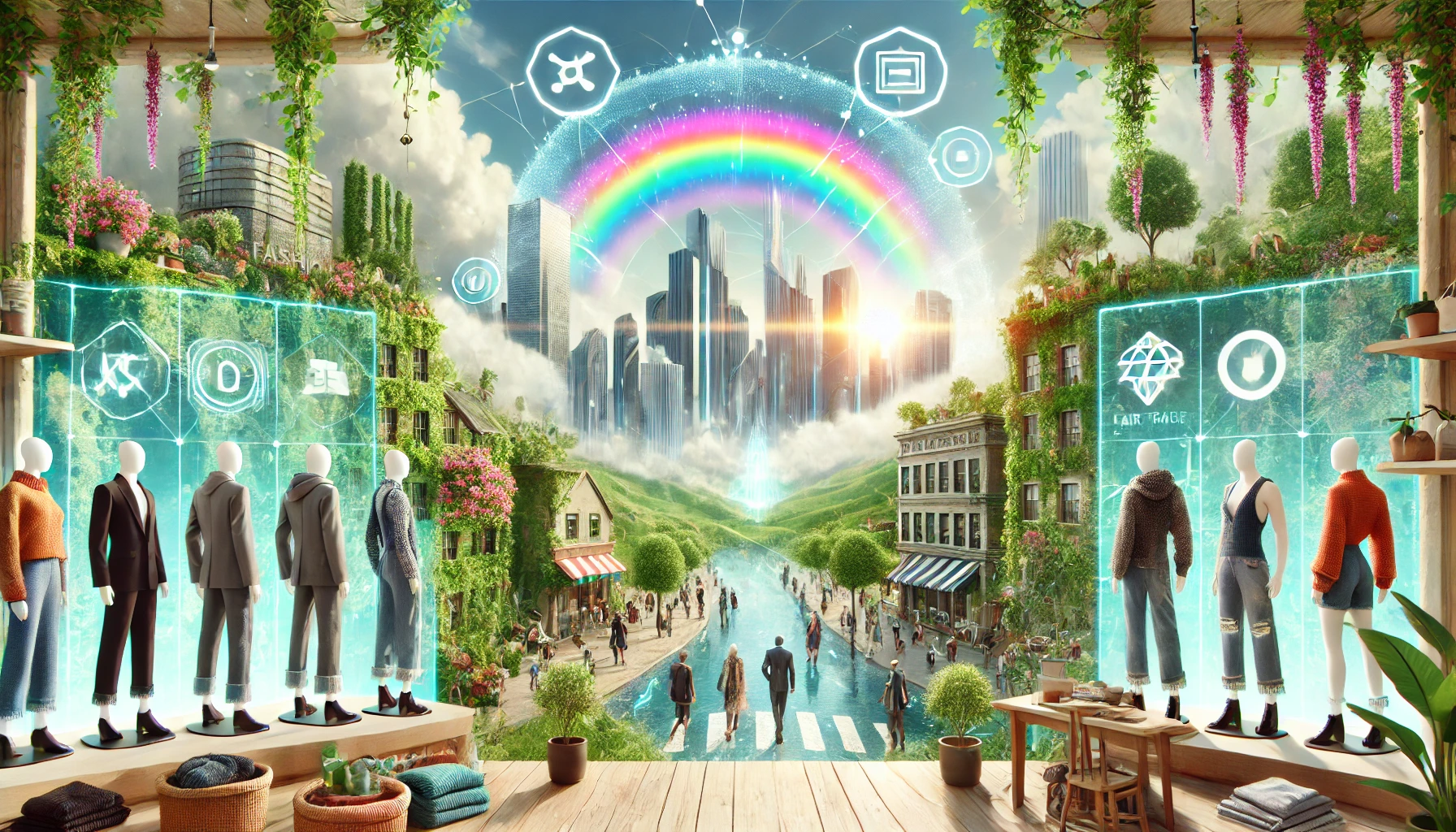- Your cart is empty
- Continue Shopping

The fashion industry is at a crossroads, and the choices we make today will shape its future for generations to come. As consumers become more conscious of the environmental and social impact of their purchasing decisions, the demand for sustainable and ethical fashion is growing. The future of fashion lies in innovation, responsibility, and a collective commitment to change. Here’s a look at what the future holds for the fashion industry and how it can evolve to meet the needs of both people and the planet.
1. Sustainability as the New Standard
In the future, sustainability will no longer be a niche market or a trend; it will be the new standard for the fashion industry. This shift will involve:
Circular Fashion: Moving away from the linear “take-make-dispose” model, circular fashion promotes the reuse, recycling, and upcycling of garments. Designers will create clothing with longevity and recyclability in mind, reducing waste and conserving resources.
Sustainable Materials: The use of organic, recycled, and biodegradable materials will become the norm. Innovations in fabric technology will lead to the development of new sustainable textiles that have minimal environmental impact.
Eco-friendly Production: Brands will adopt environmentally friendly production processes, such as waterless dyeing, energy-efficient manufacturing, and reduced chemical use. These practices will help lower the industry’s carbon footprint and conserve natural resources.
Zero Waste Initiatives: The future will see an increase in zero-waste design techniques, where every piece of fabric is utilized in garment production. Companies will also implement take-back programs to ensure that old clothing is recycled or repurposed, closing the loop on fashion waste.
2. Ethical Practices at the Core
As awareness of labor rights and social justice grows, the future of fashion will place a stronger emphasis on ethical practices:
Fair Labor Standards: Brands will be held accountable for the conditions under which their products are made. This includes ensuring fair wages, safe working conditions, and the prohibition of child and forced labor. Transparency in supply chains will become a key factor in consumer decision-making.
Empowering Workers: The future will see a shift towards empowering workers in the fashion supply chain. This could involve providing education and training opportunities, promoting gender equality, and supporting local communities.
Consumer Awareness: Educated consumers will demand more from brands, expecting transparency and ethical practices. Brands will need to provide detailed information about their supply chains, allowing consumers to make informed choices.
3. Technological Innovation Driving Change
Technology will play a crucial role in shaping the future of fashion, enabling more sustainable and ethical practices:
Digital Fashion: The rise of digital fashion, where clothing is designed and worn virtually, could reduce the need for physical garments, thereby decreasing material consumption and waste. Virtual fashion shows and digital fitting rooms will also become more common, reducing the need for travel and physical retail space.
Smart Textiles: Advances in smart textiles will lead to the creation of garments that are not only sustainable but also functional. These fabrics could have properties such as self-cleaning, temperature regulation, and energy generation, enhancing both the longevity and utility of clothing.
3D Printing: 3D printing technology will revolutionize the way clothing is produced, allowing for on-demand manufacturing and customization. This reduces overproduction and waste, as garments can be made to order and tailored to individual preferences.
Blockchain for Transparency: Blockchain technology will provide a transparent and immutable record of a garment’s journey through the supply chain, from raw material sourcing to final production. This will ensure accountability and build trust between brands and consumers.
4. Inclusivity and Diversity
The future of fashion will be more inclusive and diverse, reflecting the needs and desires of a global audience:
Body Positivity: Brands will embrace body positivity by offering a wider range of sizes and celebrating diverse body types in their marketing campaigns. Customization and made-to-measure services will become more accessible, ensuring that everyone can find clothing that fits and flatters.
Cultural Representation: The fashion industry will increasingly recognize and respect cultural diversity, incorporating traditional techniques and designs from around the world. This will not only preserve cultural heritage but also foster greater creativity and innovation in design.
Gender Fluidity: As societal norms evolve, fashion will become more gender-fluid, with unisex collections and designs that transcend traditional gender boundaries. This shift will empower individuals to express themselves authentically through their clothing.
5. Collaboration and Community
The future of fashion will be characterized by greater collaboration and community involvement:
Brand-Consumer Partnerships: Brands will engage more deeply with their customers, involving them in the design process and using their feedback to create products that meet their needs. This co-creation model will lead to more personalized and meaningful fashion experiences.
Collaborative Consumption: The rise of the sharing economy will extend to fashion, with rental services, clothing swaps, and secondhand markets becoming more popular. This will reduce the demand for new clothing and promote a culture of reuse and sustainability.
Industry Collaboration: Fashion brands, designers, and manufacturers will work together to address the industry’s challenges, sharing resources and knowledge to develop sustainable and ethical practices. Collaboration will also extend to other sectors, such as technology and agriculture, to drive innovation and positive change.
6. The Role of Policy and Regulation
Governments and regulatory bodies will play a crucial role in shaping the future of fashion:
Sustainable Fashion Legislation: Governments will introduce regulations to hold brands accountable for their environmental and social impact. This could include mandates for sustainable sourcing, waste reduction, and fair labor practices.
Incentives for Sustainable Practices: Policies that incentivize sustainable practices, such as tax breaks for eco-friendly businesses or subsidies for research into sustainable materials, will encourage more brands to adopt responsible practices.
Global Standards and Certifications: The development of global standards and certifications for sustainable and ethical fashion will provide consumers with clear guidelines and help ensure consistency across the industry.
Conclusion
The future of fashion is one of sustainability, ethics, innovation, and inclusivity. As the industry evolves, it will move away from the harmful practices of the past and towards a more responsible and conscious approach. This transformation will require collaboration, creativity, and a commitment to change from all stakeholders, including brands, consumers, governments, and communities.
By embracing these principles, the fashion industry can become a force for good, creating beautiful and meaningful clothing that respects both people and the planet. The future of fashion is not just about what we wear; it’s about how we create, consume, and care for our world.

I am 6 feet tall and 220 lbs. This shirt fit me perfectly in the chest and shoulders. My only complaint is that it is so long! I like to wear polo shirts untucked. This shirt goes completely past my rear end
My husband always says that the Lauren polos fit better and last longer than any other brand.I love the new “heathered” color and the price is always excellent through shop